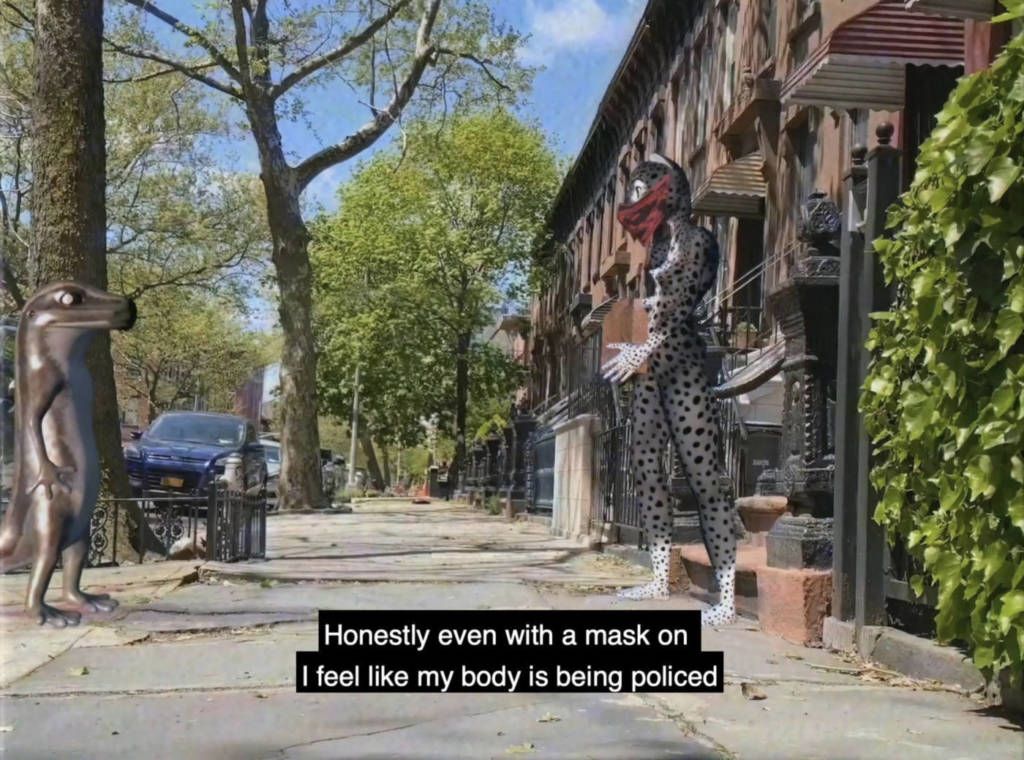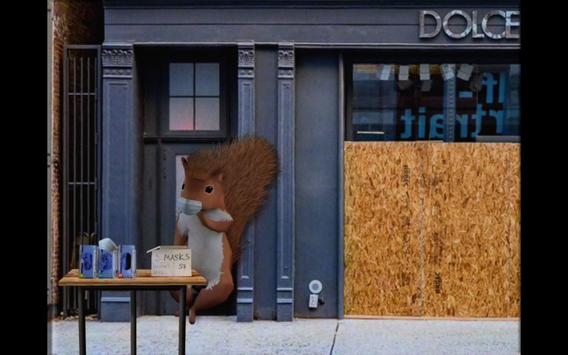- The Internet is Video Art Lecture
- Assign internet video presentations for next class-
- Look at any final Parents videos-
- Give short internet video presentations
- Read and discuss article
- Assign proposals for Internet video art
THE INTERNET IS VIDEO ART:
“Faced with the awe-inspiring popularity of web-monoliths like YouTube, contemporary art risks becoming nothing more than a quaint relic of the 20th century.
It’s probably not fair to compare contemporary art practice with YouTube; yet there is evidence to suggest that somewhere in the ulterior of its collective brain, the art world does just this, and finds itself lacking. How else to understand the ongoing assurances given in art exhibition press releases and catalogue essays about the important role the viewer plays in the construction of meaning – and the intention to facilitate it with this very exhibition?
If artists once played a leading – avant garde – role in providing a complex and forward-looking framework for reflection on the contemporary world, it now seems most comfortable bringing up the rear, providing explanations for developments already intuitively understood and widely enjoyed by the culture at large. “
Rosemary Heather, From Army of You Tube
Artists who shape and respond to popular video culture
Pipillotti Rist
Pipilotti Rist (Swiss) talks about her first work of video art “I’m Not the Girl Who Misses Much” from 1986 – barely art – that they submitted to a festival just to get a free ticket to see the shows. Before MTV, before YouTube the artist – like Joan Jonas or Bruce Nauman or Nam June Paik and others – was performing simple gestures, improvised performances, and performing herself in footage that was rough, poor quality, chaotic and spontaneous.
Did artists invent music videos? You Tube?
Kelly Mark
Or cat videos? See Kelly Mark, Toronto based artist in 2002.
See the video here: http://kellymark.com/V_MusicVideoSeries1.html

–
–
Ryan Trencartin
“Ryan Trecartin’s videos depict a vertiginous world I’m barely stable enough to describe. Watching them, I face the identity-flux of Internet existence: surfing-as-dwelling. Images evaporate, bleed, spill, metamorphose, and explode. Through frenetic pacing, rapid cuts, and destabilizing overlaps between representational planes (3-D turns into 2-D and then into 5-D), Trecartin violently repositions our chakras. Digitally virtuoso, his work excites me but also causes stomach cramps. I’m somatizing. But I’m also trying to concentrate.” From Situation Hacker: The Art of Ryan Trencartin, Wayne Kaustenbaum
Maya Ben David
Biography
Maya Ben David (MBD) is a Toronto-based Jewish-Iranian Anthropomorphic Airplane. Working in video, installation and performance, she creates worlds and characters that aid her ongoing exploration of anthropomorphism, cosplay and performative personas. Ben David presents the origin stories of her characters in the form of video and performance, and expands on them via her online presence. They often inhabit alternate universes accompanied by nostalgia, such as the worlds of Pokémon and Spiderman. In addition, Ben David also plays a character called MBD who is known for having multiple feuds with her many alter egos as well as the art world. Most infamously, MBD has ignited online feuds with artists such as Jon Rafman and Ajay Kurian. Bio from her site Maya Ben David
Arthur Jaffa:
Warning about video art below: Contains explicit/violent material, actual footage
“Well my thing was like, first of all, there’s something to be said for just making explicit what is oftentimes implicit—which is black people being killed as if we’re not human beings. How do we introduce something in the space that can cut through the noise? There’s a real problematic around the appropriateness of having an image of a man getting murdered. But this footage is all over the place. It’s everywhere. It’s not like we’re talking about digging stuff out of some archive that’s never been seen before.
It’s literally everywhere so the question becomes: How do you situate it so that people actually see it, this phenomena, as opposed to just having it pass in front of them? How do you have people actually see it? And simultaneously, how do you induce people to apprehend both the beauty and the horror these circumstances? There’s something profound (and magical) to be said about the ability, the capacity to see beauty anywhere and everywhere. I think it’s a capacity black people have developed because not only are we are not authorized, we’re demonized—we are radically not affirmed, so we’ve actually learned not just how to imbue moments with joy but to see beauty in places where beauty, in any normative sense, doesn’t necessarily exist.”
From Love is the Message, The Plan is Death, Arthur Jafa and Tina M. Campt in coversation on e-flux
OPTIONAL READ: From Love is the Message, The Plan is Death, Arthur Jafa and Tina M. Campt in coversation on e-flux
Orian Barki and Meriem Bennani, 2 Lizards: Episode 1, 2020
2 Lizards: Episode 1, 2020
Artforum is pleased to host this Instagram video by Orian Barki and Meriem Bennani, made while self-isolating because of COVID-19.
Beautiful moment of communion through sound waves in Brooklyn despite social distancing—the virus’s protective membrane is very sensitive to soap and heat but also bass. These two lizards are lucky they work from home and can afford to stay inside. This is the first collaboration between Yani and me; we made it over the weekend to take a break from editing and animating for work. —Meriem Bennani

This is what it feels like to live
presently in a historical moment.
“2 Lizards is an artistic time capsule that fuses genre—part documentary, part fiction—using cartoon animals to represent the artists’ community. The resulting absurdity and realness channel humor and sincere emotion to explore the societal fissures that formed around the pandemic, and its intersection with systemic racism. Each episode explores a specific quarantine mood: dreamlike detachment, anxiety, impassioned protest. Melodrama is notably absent. Instead we see cool emotions and “affect management.” Daydreaming, scrolling, and distraction abound. In addition to physical confinement, there is an emotional confinement that manifests as out-of-sync-ness: the lizards move with a particular cadence, slightly slower than everything else. This, the videos seem to say, is what it feels like to live presently in a historical moment.” From MOMA
2 Lizards joins a rich history of diaristic video art, including Gregg Bordowitz’s episodic Portraits of People Living with HIV or George Kuchar’s performative video diaries. Like Bordowitz’s and Kuchar’s footage of the mundane, 2 Lizards focuses not on the crisis as an event but on its daily effects. (It isn’t until episode four, when the lizards visit a friend, a healthcare worker, that we hear stories about the coronavirus tragedies.) As an event, contagion is invisible, but the ripple effects are evident. This is reminiscent of cultural theorist Lauren Berlant’s term “crisis ordinariness,” whereby “crisis is not exceptional…but a process embedded in the ordinary that unfolds in stories about navigating what’s overwhelming.”[1]

2 Lizards
This series speaks to the changing methods of image consumption that aim increasingly toward smaller, more portable screens and user-generated content that seeks to comfort through humor. Like memes, the lizards are an opiate for our precise moment of extreme social disruption. Much of the value in these videos is their format (the Instagram video), as they inextricably tie the work to the platform and its users. 2 Lizards is a feedback loop: it reflects the Internet by incorporating new modes of image technologies related to the constant stream of pictures, which are then distributed back into the world through those very feeds. During lockdown, in the context of isolation, social media became a place where many of us channeled our pent-up communal and emotional need to connect. It is where we received information about the world and began to watch a new one unfold.
Yuula Benivolski
aspacegallery.org
“Scrap Pieces is a collaborative meditation on the physical components of the surface of images. This 4 channel video project borrows materials from the studios of four Canadian photographers: Laurie Kang, Jeff Bierk, Nadia Belerique, and Celia Perrin Sidarous. Filmed in the intimate style of Autonomous Sensory Meridian Response (ASMR), Benivolski soothes the viewer using debris and scrap materials such as small pieces of metal, silicone, plaster casts, test strips, seashells, glass, wires and transparencies.” Yuula Benivolski from her site


https://www.archivalaffections.com/yuula-benivolski.html
Traces
2021 / 4k video / colour / sound / single screen / 62’46
“Traces is an ASMR video tutorial that demonstrates the process of forensic fingerprint development on old currency that has been out of circulation for thirty years. With Bridget Moser.
I left Moscow at 10 years old when it was still part of the Communist USSR and made my first trip back home to the “Russian Federation” 28 years later. Curious about the disappeared ideology and citizens of the place I was born in, I purchased 300 Soviet banknotes which went out of circulation in 1993, with plans to lift fingerprints off them.
The fingerprints, once revealed through a chemical process taught to me by a forensic specialist, are photographed using an orange filter on a macro lens, and enlarged 80 times their size, in order to show the last natural traces of a place that has been made to vanish.” Yuula Benivolski
Assignment for next class:
Forage through the internet for the tropes of popular video culture you would like to explore more deeply. We’ll discuss possible options in class, so a pair of students can each present a video genre. The presentation should take up to 10 minutes MAX. including video screening time.
Prepare a presentation on your blog page – of one internet video. Include a detailed description of the video.
Consider these questions and others relevant to your selction:
- How is it shot, and framed? Where does the material come from? What is the quality of the footage?
- How is it edited, and does it flow from clip to clip?
- What does it sound like? How are sound or image manipulated and transformed from original footage?
- What are some of the key features that define this genre?What are some weird variations on it?
- What are some of the reasons these kinds of videos are compelling or useful in this historical moment? Use quotes from published sources to back up your arguments and analysis.
- How do you relate to it?
Post your presentation materials on your blog (on both partners’ pages).
–
Prepare a PROPOSAL for next class:
POST INTERNET VIDEO ART
Together with a partner – prepare a proposal for a new Post-Internet video work of Video Art to discuss. Include references to video tropes on the internet.
Consider some of these questions in your proposal:
- How does your video document a historical moment – in internet culture, and in the wider world?
- Do you want to use found footage, or create footage, or perform for the camera?
- How does it amplify, deconstruct, or subvert what is already happening on the internet?
- What is the kind of experience you want to create for viewers/users?
- What is the ideal site for presenting the video – is it on the internet? As a meme? On social media? In a fan site? In a gallery installation? A projection in public outdoors? How would it ideally be circulated?
- What are some of the technologies, software, or technical experiments and gimmicks you may need to achieve? Do you want to use avatars? Live stream? Rip music and video from YouTube? Prepare your ambitious technical goals for Nathan, and we can design demos to support your ideas.
